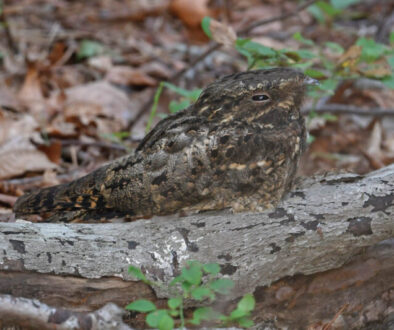Nature: Watching Whales
Spend the day at any of the Cape May beaches this summer and you’re sure to see at least one of the various whale-watching boats motoring to or from port. I’ve heard locals joke about them as “dolphin watching” boats, and there’s some truth as at least one company offers a free voucher if they fail to point out a dolphin, whale, or porpoise during the trip.
Summer is a major time for inshore bottlenose dolphins in Delaware Bay (I’ve written about this in previous Nature columns), but Cape May’s history is inextricably tied not to dolphins, but to their larger counterparts: the whales. While there’s no doubt those indigenous to the land witnessed the annual passage of whales off Cape May for millennia, New England whalers founded the village of Town Bank, bayside, just north of the Cape May canal, back around 1632. The town prospered through the 17th century, with accounts of up to a dozen whales taken in a single season, and only limited by the availability of good harpoons. Back then vessels for whaling were basic and limited, and most of it was done near shore as whales made their way to the mouth of the Delaware Bay. It’s no wonder, as this is still a site rich in aquatic resources, owing to the tidal flux that brings nutrients out of the bay and over the shallows of the Cape May Rips several times a day.
The most common whale of our region is hands-down the mighty Humpback, which can be seen from shore not only during the spring and summer, but year-round. Breaching is commonly seen off our coast along with lunge feeding and pectoral fin slapping or tail slapping. I can recall one May when, from the fifth-floor ballroom of the Grand Hotel, the whole room cleared out to the windows to watch a humpback tail-slapping a few hundred yards offshore, continuously, for nearly an hour!

As for the origins of the whales that grace our nearshore waters, the consensus is that many of them are migratory between calving grounds in the Caribbean and food-rich feeding grounds in the Gulf of Maine. As more whale-watching trips are held in Cape May, though, and the catalog of whales grows, it has become clear that not everyone follows expected annual migration. Whale Watching companies, like the Cape May Whale Watch & Research Center, have identified over 100 whales off our coast. Over the years they’ve observed whales that appear to stick around through the winter months rather than migrate. The whales are thought to be younger whales that may not be mature enough to breed in the Caribbean. Since it takes roughly five years for female humpbacks to reach sexual maturity, and could take even longer for males, as they must compete with other males for available females, this isn’t such a hard finding to accept—nor is it so strange in other animals.
In fact, right here in Cape May it’s common to have some Surf and Black Scoters (sea ducks) that stick around through the summer, when they should be up on the breeding grounds in northern Canada. But since they take two or more years to reach sexual maturity, why not just hang at the beach instead? I can’t blame them. But I digress. The best part of all of this is that Humpbacks can be present year-round in Cape May, although the primary sightings are in the spring and the fall when the populations swell due to migration. But humpbacks aren’t the only ones visible from Cape May, especially if you’re willing to take a trip offshore.
Various companies now offer full day (and even longer) offshore excursions out to the deep-water canyons. On these trips the marine mammal diversity really shines, and you have a good chance at numerous species including Pilot Whales, Minke Whales, Right Whales, Sperm Whales, and more. One of my personal favorites are the Risso’s Dolphins with their intricately scarred bodies from social tussles among other individuals, as well as contact with their prey, which is almost exclusively squid.
Whether you scan the ocean from the 8th Avenue Jetty in Avalon, take a half-day Whale Watch trip out of Cape May, or get adventurous on an overnight pelagic trip, you’ve always got a chance of an amazing marine mammal experience.
So, what are you waiting for? ■



